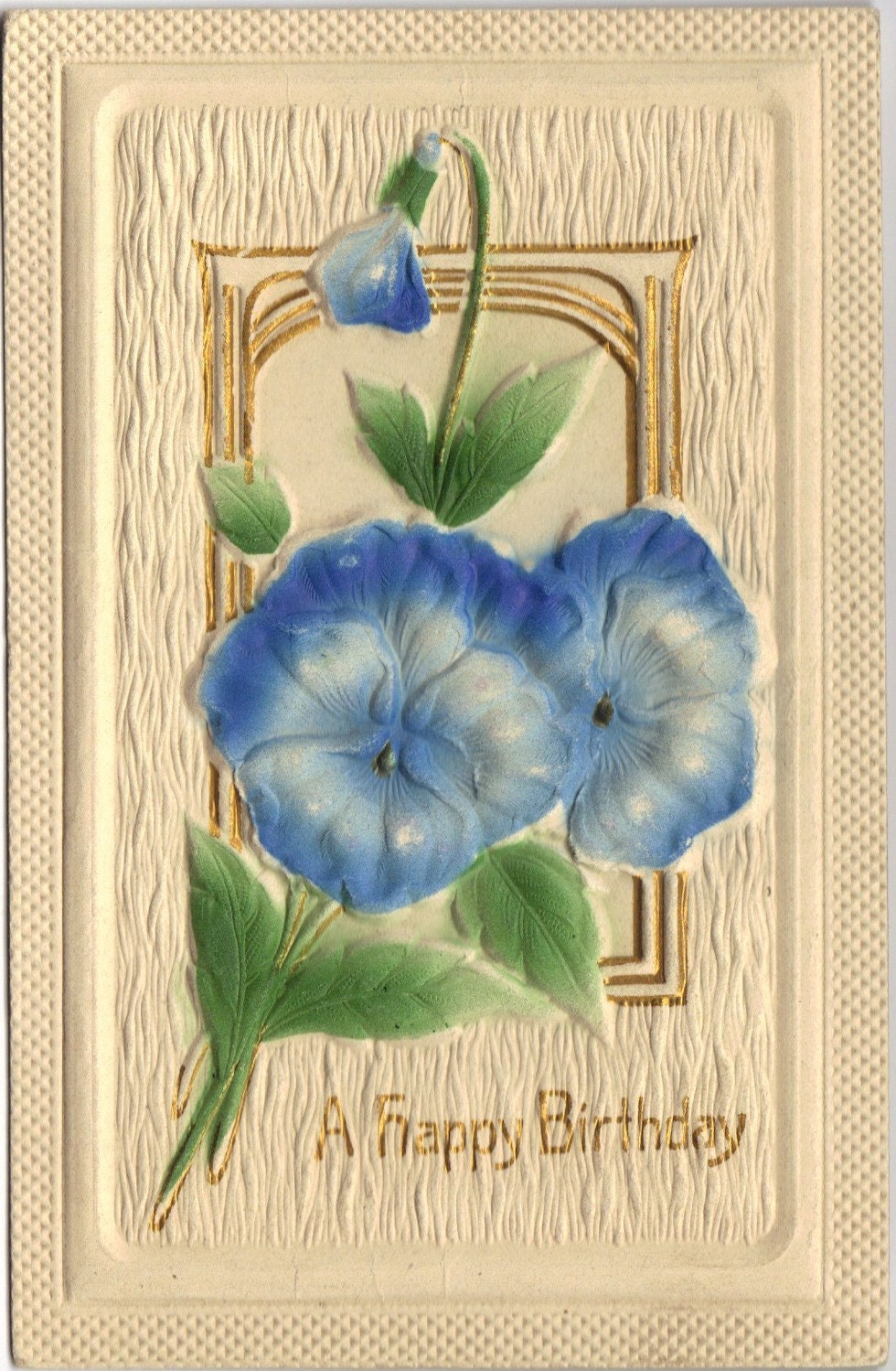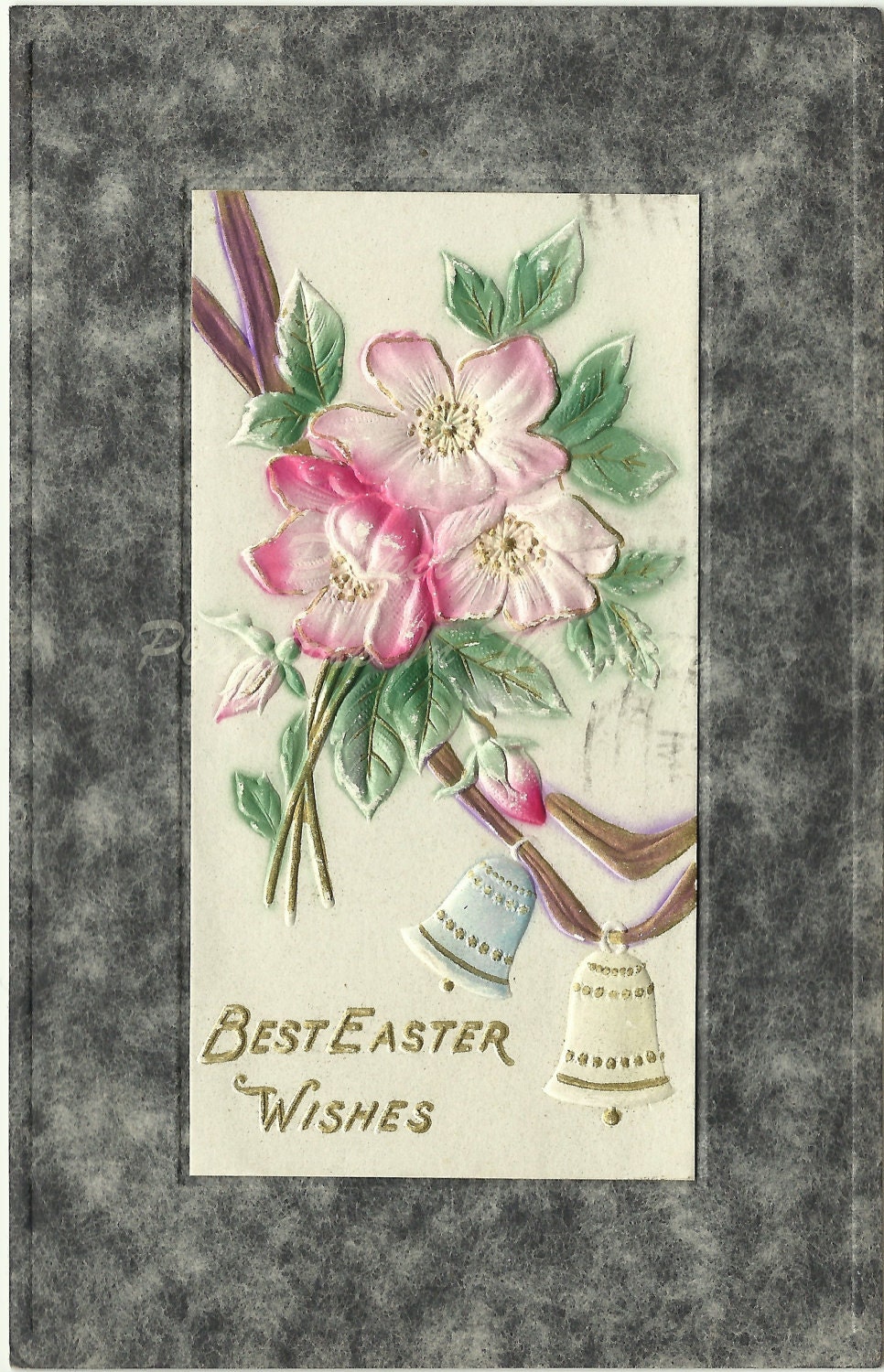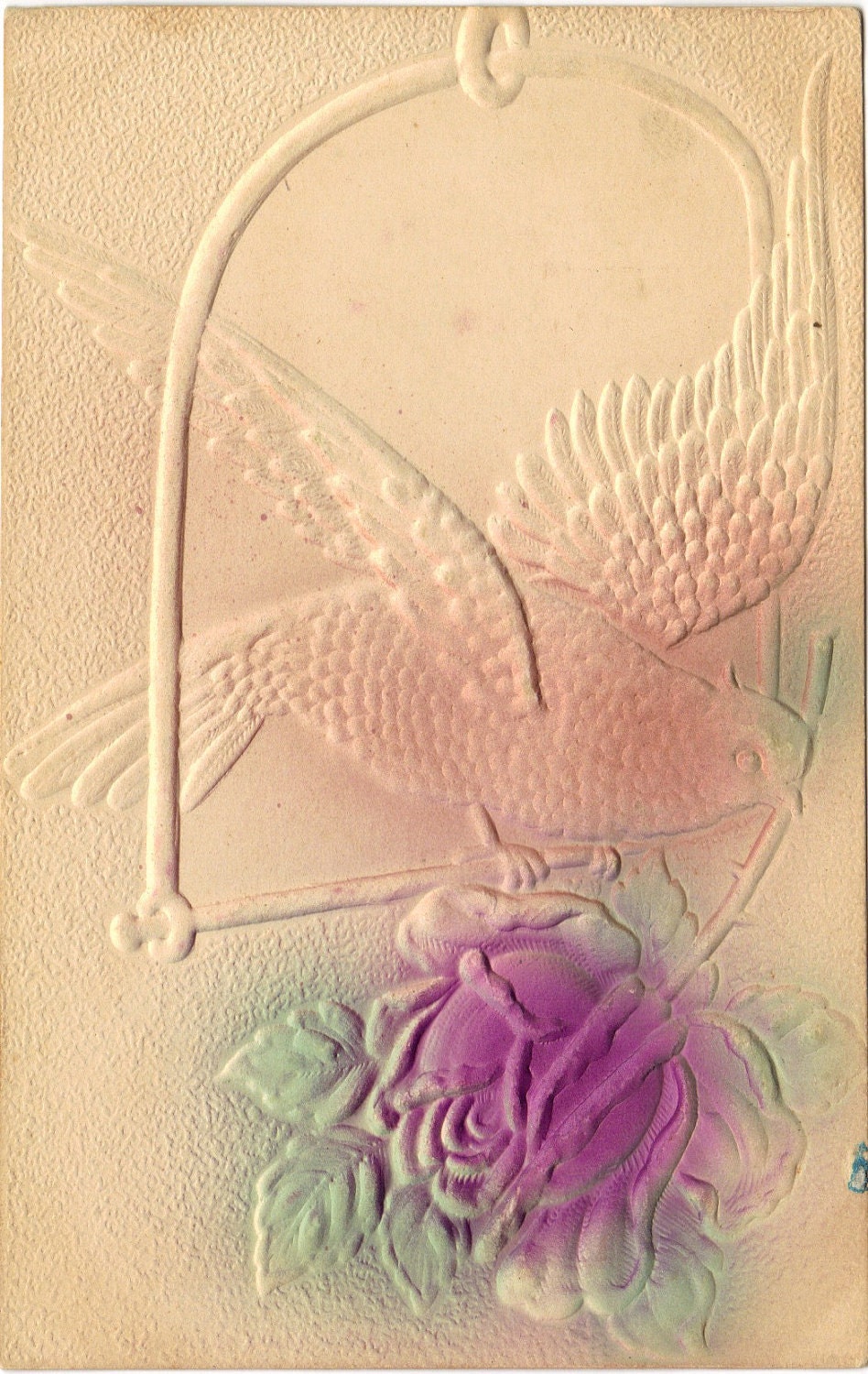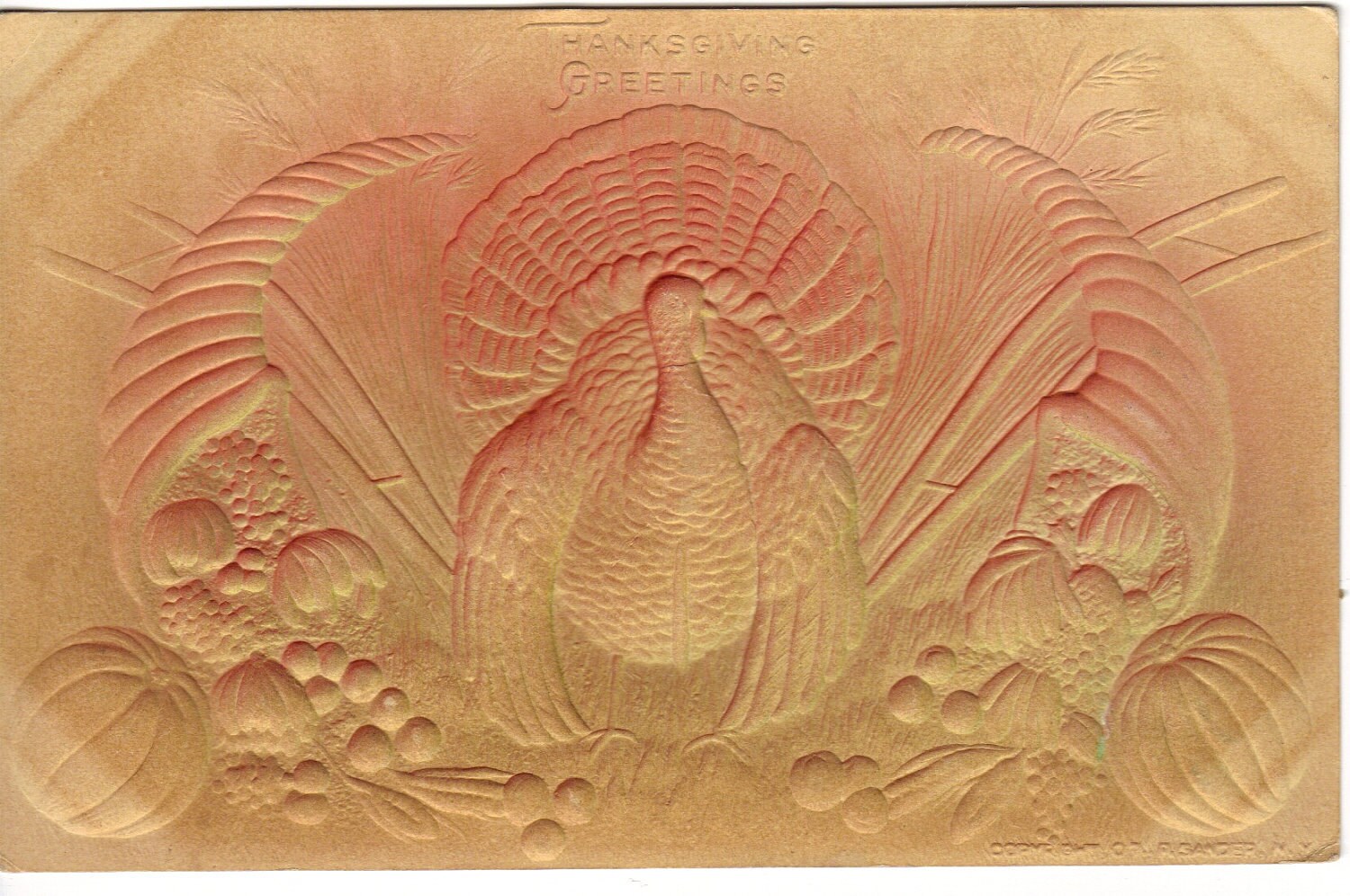While all there seemed to be to embossing a card was to raise up the paper it had several things that could make it a challenge. Printing techniques were advancing but there were no means to avoid having to use an actual press to apply the image so most of the embossing was done after the card was printed. After the image was applied the card was lined up, often using pins, and put through another press that had male and female plates to mold the card. This process was common and used for many types of scenes and images.
However there are cards that have been "heavily embossed" or "blind embossed" which almost look as if they were made out of paper mache. These cards have not been printed because the printers found that once they applied the pressure and heat necessary to make such a deep embossment, the ink would crack and be ruined. They also found that painting the cards by hand didn't work because the paper would become soft and the embossing would then be damaged. So most cards that are heavily embossed are air brushed. A number of years ago I mistakenly thought that airbrushing was a fairly modern technique but it turns out that it has been used since the late 1800's.
These heavily embossed cards are so pretty and soft looking because of the airbrushed technique. One other feature with many of these cards is it that they are mounted on another piece of paper or cardboard so that they could be written on. The deep impressions on the other side would be a challenge for the correspondent so they simply glued it to another layer.
Often the heavily embossed cards were damaged during storage and use making them a little bit more of a challenge to find. It is best to store the cards in an archival quality sleeve and keep them in acid free containers resting on their side so as not to squish the embossed image.
Here are some examples found in Postcards In The Attic:






No comments:
Post a Comment